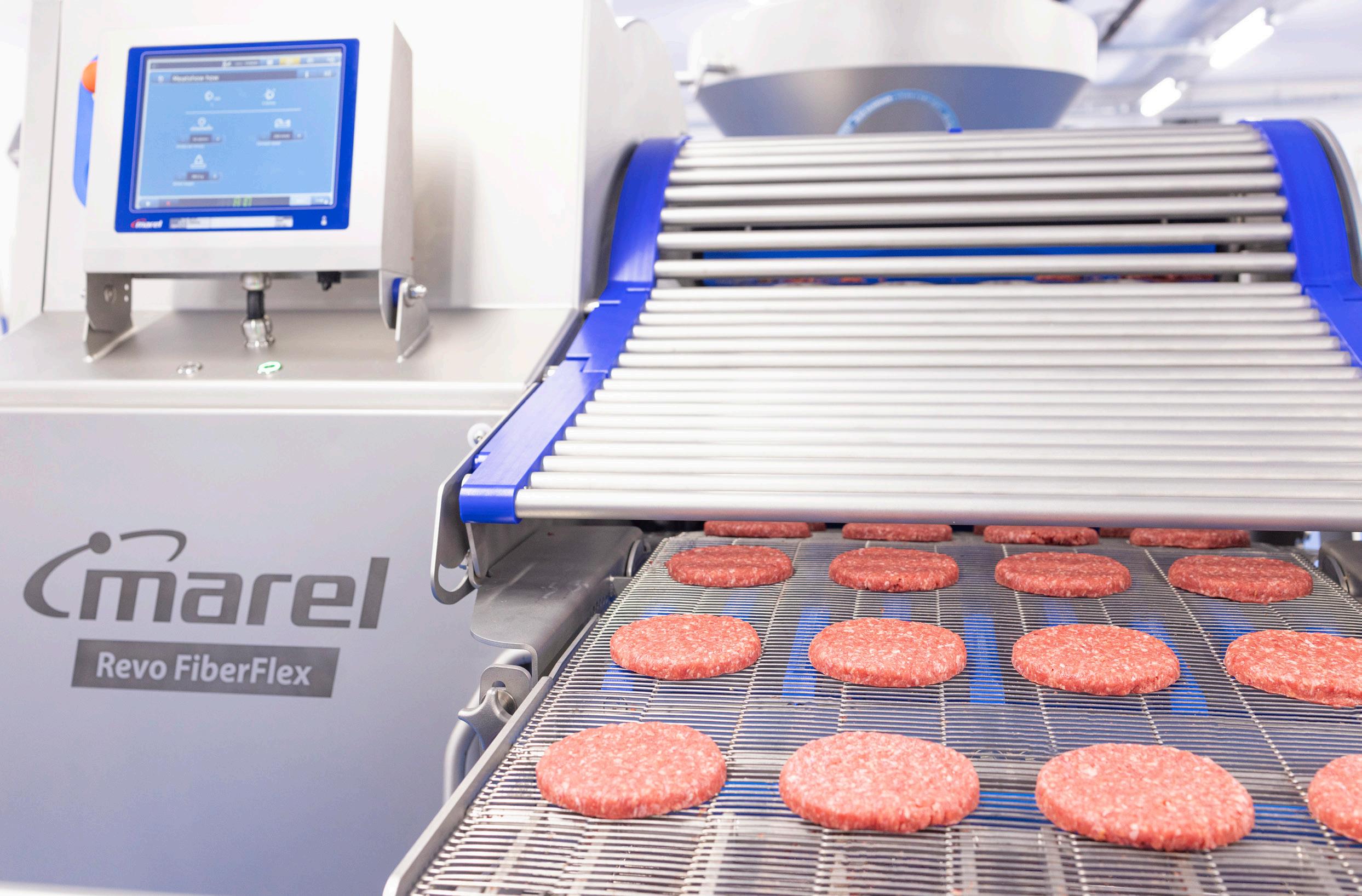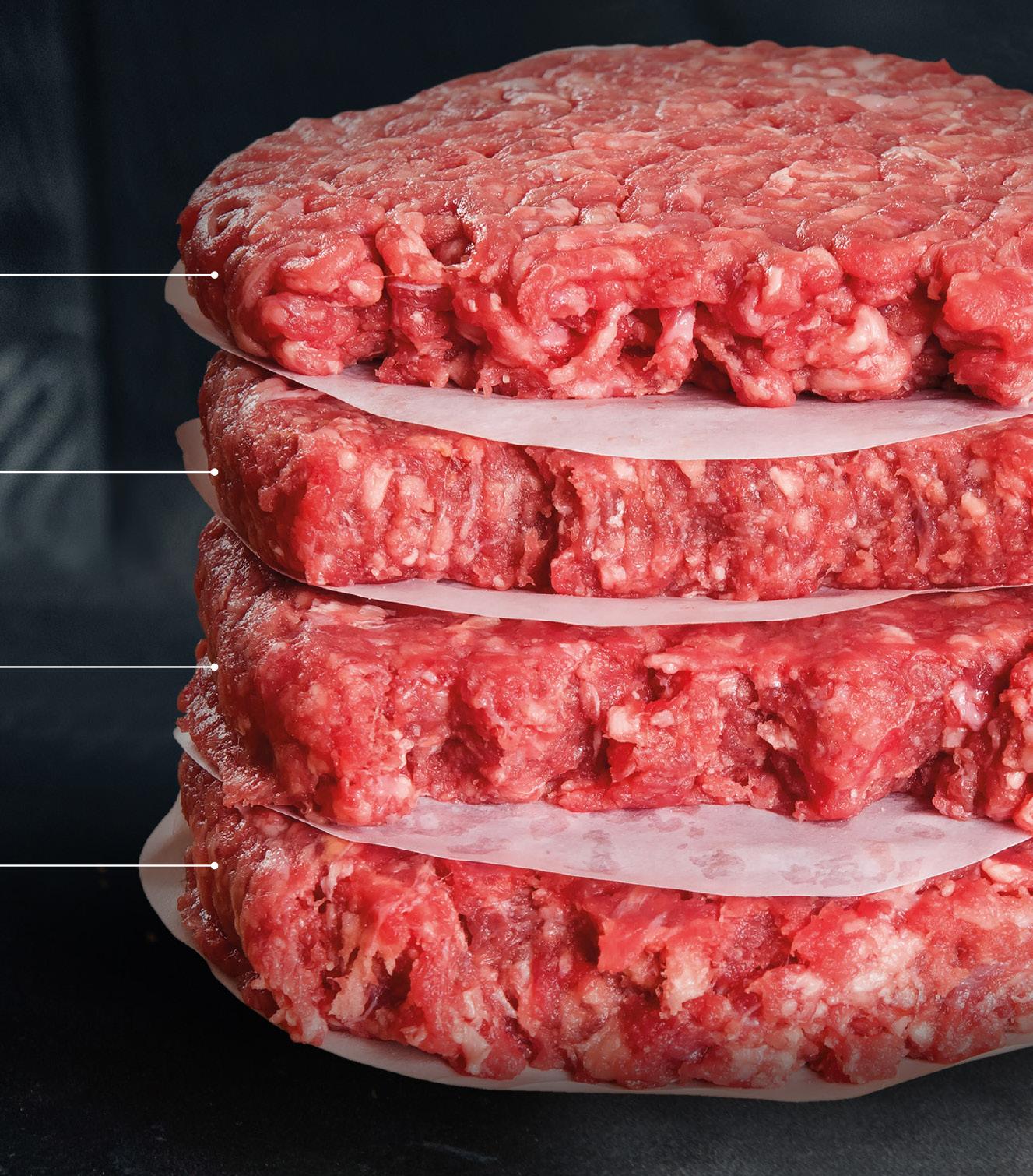
2 minute read
FIBER ORIENTATION: HOW CAN IT HELP YOU MAKE BETTER BURGERS?
Controlling fiber orientation is key to creating texture, bite and juiciness in a burger.
What makes a good burger? The criteria for many are taste, texture and appearance. Fiber orientation significantly affects each of these things. But what exactly is fiber orientation? How can you control it? And how will it help you make better burgers?
Advertisement
What is fiber orientation?
Fiber orientation in burger processing refers to the direction of the individual columns of protein fibers or the grain of the ground meat. Various burger types are easily identifiable based on how the fibers are oriented. Each one delivering a specific eating experience and taste. The standard burger is typically pressed with random fiber orientation. There are the homestyle and tender-fresh burgers, where the fibers are oriented vertically. And then you have the butcher burger where fibers are interlaced.

Why is fiber orientation important?
Michelin Three-Star chef Heston Blumenthal of MasterChef fame, spent six months using science to create the ‘perfect hamburger’. His biggest revelation was that in order to achieve an open, tender and juicy texture, the grains of ground meat should all fall in the same direction.

One of the current trends in the burger market is the growing number of consumers seeking variations on the humble burger patty. They want new eating experiences and look for burgers with variations in texture and a distinctive bite. Therefore, it is becoming increasingly important that processors can create premium burgers that give an optimal eating experience. Controlling fiber orientation during processing is key to controlling the characteristics of a burger and gaining the following benefits.
Create different patty textures
The orientation of the meat proteins determines burger texture. By controlling the direction of the fibers, it is possible to obtain very distinct textures and create different types of burgers. For example, when a loose bite is desired, a fiber orientation perpendicular to the plane of the burger is best. Alternatively, interlacing the fibers will give a more open structure that is juicier and requires shorter cooking time.
Get a better bite
Burger texture is not only influenced by the direction of the fibers but also by the size of the individual columns of meat fibers. Increasing the size of the columns gives more bite, improving the feeling in the mouth and giving a more beefy texture.
Create different levels of juiciness
Combining different sizes and orientations of meat fibers makes it possible to control the spacing of fibers with air inside the burger, which influences the bite and cooking time.
Improve final appearance
Cooking a burger will cause meat fibers to contract, and, after cooking, it should remain a similar size and still look appealing. It is possible to ensure shrinkage is visually minimized by controlling the orientation of the meat fibers during processing and steering them in a vertical direction. As the burger is cooked, the reduction will be in height rather than in diameter. This means that it will look similar in size before and after cooking, giving the consumer an optimal post-purchase experience.
Freeze more efficiently
Fiber orientation not only affects the burger itself but also has the added benefit of making the freezing of end products quicker and more efficient, saving time and money during the production process.
How can you control it?
There are a number of ways to control fiber orientation. The most innovative methods involve combining a high level of control over the meat mass with low pressure forming technology. This allows a final grind to be made and fibers to be precisely steered when the patty is formed.
Marel’s team of burger experts can work closely with you to find the best way possible to create your required product. We do this by applying our deep-rooted knowledge of food technology and in-depth understanding of further processing.
For more information, visit www.marel.com/burgers










